Garmin Varia Radar: Garmin Varia Suite Part 2
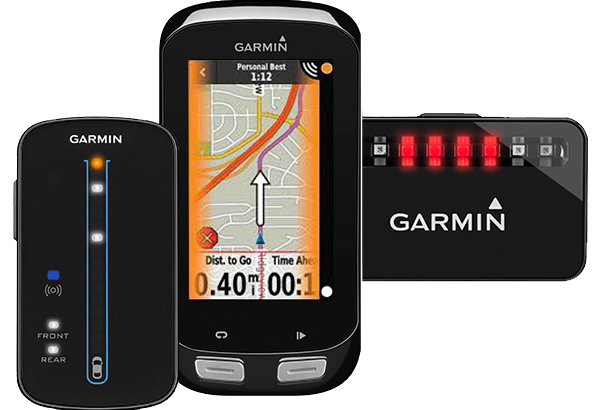
The Garmin Varia Radar system is based around the RTL 500 rear taillight that features a built-in radar. You can buy the RTL 500 on it's own or with the RDU head unit that displays vehicle information on a dedicated display – the RDU (Radar Display Unit). The RTL 500 can also sync with most of Garmin's Edge cycling computers as well as connecting directly to the Varia Vision HUD. As with all ANT+ communication, the system here is not an exclusive relationship. You can link your RTL 500 with the RDU, with an Edge computer, and with a Varia Vision HUD. Pairing with any one device does not impact the ability of any device to receive information from the RTL 500.
The Varia Radar began life as a crowd-funded project called Backtracker. Ray Maker of DC Rainmaker did a great review of Backtracker back in 2014. Ultimately, it fell short on the crowdfunding side and was acquired by Garmin. Garmin has a successful history of knowing when to grow via innovation and when to grow by acquisition. They've acquired key new technologies before, best exemplified in my mind by their acquisition of Metri-Gear, makers of the Vector pedal-based powermeter. While the established market for a bike radar is not nearly as large as for a powermeter, I have to believe the potential market here is much larger; this is a product that could benefit almost anyone who rides a bike on the roads. As I'll talk about more, I don't think the product is yet compelling enough to make it a "must have" item, but I do think it's pretty great for a first generation product and certainly is worth looking at, though the ideal use case might be different than you'd expect.
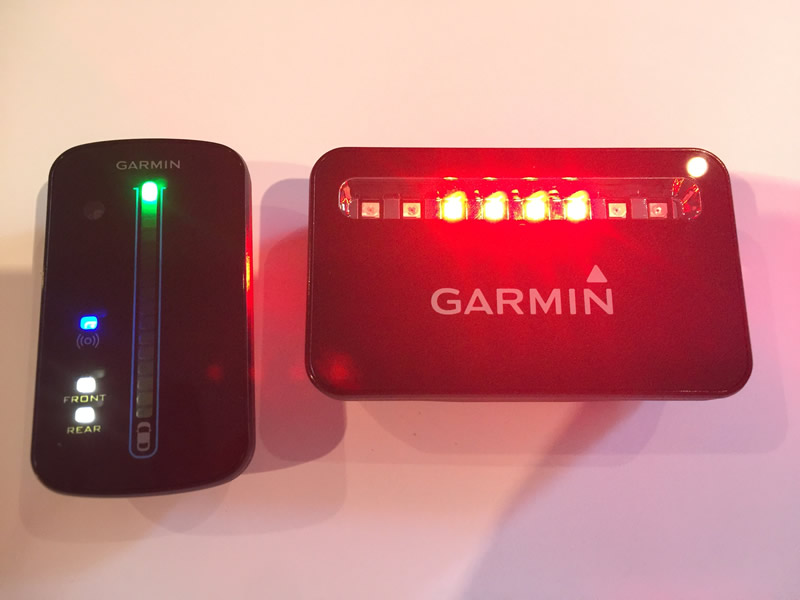
RADAR
Let me start out by saying, unequivocally, that the car-sensing capabilities of the Varia Radar are fantastic. It's ability to pick up cars – up to eight in total – and to present the information in a coherent, simple, and effective manner is incredibly impressive for a first generation product. If you want to be able to see behind you without relying on a mirror (and when a mirror isn't ideal – such as at night), the Varia Radar delivers.
To be clear, the Varia Radar is a literal radar (RAdio Detection And Ranging) unit, meaning it uses radio waves to detect objects. On a straight-line distance, the Radar picks cars up starting at 140m back. I'd say based on my estimation, that's a relatively conservative estimate by Garmin. I think it might be further, though I'm sure there is some variance for the size of the vehicle, etc. In any case, I can say pretty confidently that the Radar picks up cars when they are AT LEAST 140m behind you. And it definitely might be further.
The Radar has a spread of about 40deg. In practical terms, what this means is that if you are in the bike lane/shoulder, and you are riding on a two lane road, the radar will pick up cars in the left hand lane. Unfortunately, the display is contained within a single line. So you can't tell whether the car that pops up on the radar is right behind you or if it giving you a nice wide berth.
Whether on the dedicated RDU (Radar Display Unit) or on your Edge or Varia Vision HUD, the Radar system uses a Green/Orange/Red color code. Green means no cars. Orange means car(s) back. And Red means a car approaching at a "high rate of speed." The "red alert" for a high rate of speed approach is interesting, but again, not necessarily sure how actionable it is. Especially if you ride on a road where cars drive fast, what are you supposed to do with this information?
The Radar only picks up objects that are moving, and it also has speed thresholds. It also is looking for objects of a certain size. It won't pick up below 6mph (10kph) or above 99mph (160kph). And it is not triggered by other bikes. Not sure (just because there aren't a lot around where I ride) if motorcycles will show up or not. It has obvious limitations like not being able to distinguish between two cars right next to each other or close to each other front-to-back. Overall, though, it does a very good job – even with roads that twist and turn – of detecting cars behind you, and it does it well before you'd be able to hear them.
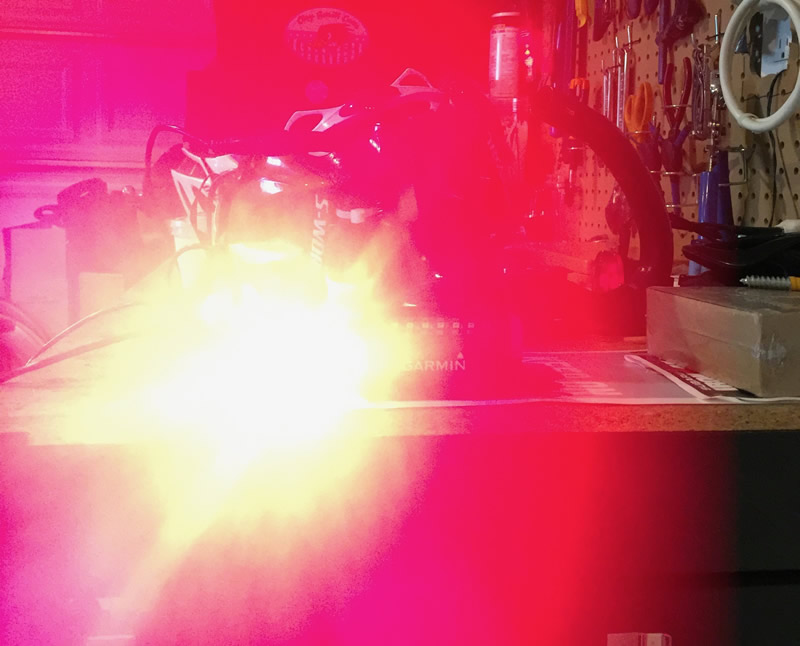
LIGHT
The big question here – or with any light – is, simply, "Is it bright enough?" Unfortunately, the answer is simply, "No, it isn't." The dynamic nature of the light is obviously a potential benefit, though I do wonder a bit about the light getting brighter as cars get closer. To me, given that the RTL 500 picks up cars when they are 140m behind you, that is pretty darn close. At that point, a car traveling at 50mph has about 5s before they overtake you. That's both a lot of time and not. I most definitely want a car that is 140m behind me to notice me. It's enough time if they are acutely aware to slow down. But if that's the point where they "become" aware, that's not really a lot of time to make an adjustment.
Looking at it from this perspective, the idea that you become more visible – by virtue of the light getting brighter – as cars get closer doesn't really make a lot of sense. You want to be the most visible while a car still has the opportunity to slow down. Being maximally visible when it's too late to do anything doesn't make as much sense.
Especially since the RTL 500 is not all that bright even at it's maximum brightness. The RTL 500 peaks out at a paltry 16 lumens. That is simply not enough. The cleverness of the design is really secondary here. This light really needs to be at least 5x as bright. And I'd like to see it more like 10x as bright. Anything less than about 50 lumens – like the Light & Motion VIS 180 – is simply invisible during the day. And not super visible at night.
My standard rear light – the Dinotte 300R (discontinued) – is 150lm. My "minimalist" light – a helmet-mounted Dinotte 140R (also discontinued; replaced by the X-series, which Dinotte will put a red LED in if you ask them to), which uses one red LED instead two on the 300R but which has a different lens, is roughly half as bright at about 100lm. Lumens don't scale perfectly linearly, so even though it's only half as many LEDs, it's roughly 2/3 as bright. The other important thing to remember is that an equivalently powerful – e.g. 2.5w – red LED will always be less lumens than an equivalent wattage white LED. This is part of why it is so hard to find a really bright tail light; the other part is that there is just a lot more development (for obvious reasons) going into white LEDs.
But you can make a rear light that is bright enough. Dinotte has led the way here, but other companies – like Lupine – are joining in. The Dinotte lights are still the brightest, but other manufacturers are realizing that triple digit lumens on a rear light makes a lot of sense. 100+ lumens is bright enough to be seen at 1000m (at least) in the middle of the day based off of my experience. That is enough time for a car to slow down well in advance. In this case, I can see making use of the radar feature to adjust probably not brightness, but rate of flash or something like that. I.e., the light starts blinking randomly when it picks up a car. Or it goes from steady to flashing when it picks up a car. Going from dim to less dim as a car closes in from 140m is simply inadequate, in my opinion, in terms of relying on the light to keep you safer.
Now, this is not to say that the RTL 500 is no good as a safety device. I like the radar feature. I like it a lot. But the light part of this system is just not good enough. I've sort of given up on the whole using a camera to try to express how bright (or not) lights are. I just am not sure it's a reliable indicator of brightness. But I think it's pretty clear that the Garmin doesn't really measure up to even a single Dinotte rear.
USE WITH EDGE 820
The big issue here is that it beeps. And you cannot turn that off. It doesn't give you a choice. Even if you have "tones" turned off, it still beeps. Every. Single. Time. If you are riding somewhere that does not have a lot of cars, this is great. But if you ride where there is semi-regular (or, especially, high) traffic, it's incredibly annoying. The display, on the other hand, is much less obtrusive. The little radar icon shows up in the top right corner. When a car appears, the radar display (looks just like the RDU) pops up on the right hand side, taking up about 10% of the display.
EDIT (11 Nov 2016): it appears that Garmin fixed this with an update to the Edge firmware. On the latest update to the 820 (and presumably the 520/1000/etc as well), you can now go into the Sensors menu. Choose Sensor Details->Alert Settings->Tones->Off.

USE WITH VARIA VISION HUD
As with the Edge 820, there is not way to turn off the "alert" feature when the RTL 500 picks up a car. On the bright side, the subtle vibrations of the Varia Vision are much, much, much less obtrusive than beeping. The subtle vibration is a nice reminder, "car back," even if it would be nice to at least have the option to turn it off.
If you just have the RTL 500 synced with your Varia Vision and no Edge, the radar display occupies the whole screen. It's like a mini-RDU here. If you have an Edge connected also, the radar icon appears in the top right of the screen and then again, as with the Edge, the radar displays pops up on the right hand side, and a slim bar appears on the left that matches the "threat" level color code. Overall, this is much more subtle.
For most of my riding, I rode with the RTL synced to my Varia Vision but not my Edge and without the RDU. That system seemed to be the most informative while being the least obtrusive.

USE WITH RDU
The RDU is a very nice and simple dedicated display. But it has no speaker to beep, which seems an odd choice for something totally dedicated to use with the RTL 500 radar. Ultimately I don't think it's worth $100. The RTL 500 integrates nicely with both Edge computers and the Varia Vision HUD, and offers a much more compelling solution in those cases, especially when paired with the Varia Vision.
The RDU display consists of a single line, which displays cars relative to you, displayed as a colored LED at the top. This colored LED follows the same green/orange/red scheme described above. It has a blue light that indicates that the unit is connected to a RTL 500 radar. And it has battery status lights for both the RDU itself and the connected RTL 500. As expected, it uses Garmin's 1/4-turn mounting system.
While it's an interesting system, it's not overwhelmingly compelling. Yet. I do think this is a product – or, really, a product line – that will certainly continue to evolve and grow. If you are intrigued by it, I can see getting the RTL 500. But paying up for the RDU as well? I just don't see that it's worth it with the current feature set. Especially if you don't currently have a great taillight, you can spend $325 and get the RTL 500 for it's radar capability and the very bright Lupine Rotlicht for outright visibility.
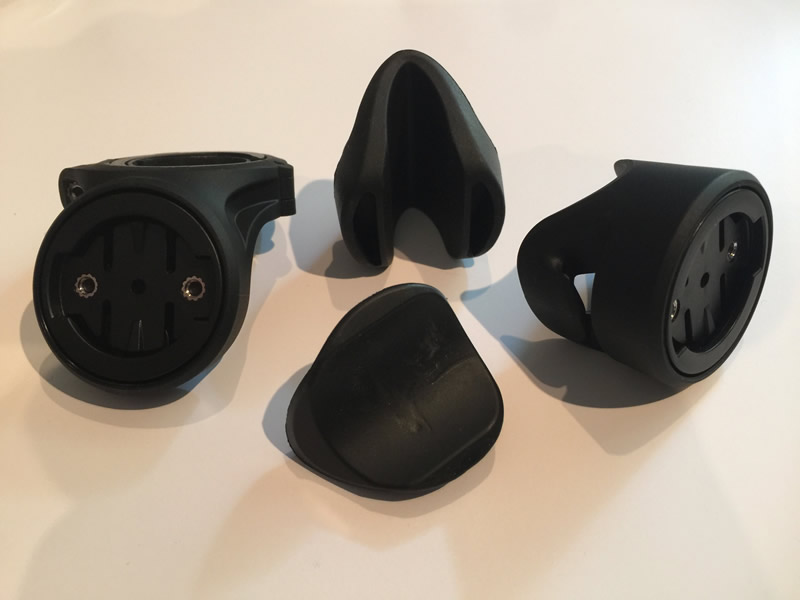
MOUNTS
Every part of the system uses Garmin's 1/4-turn mount system, which is great. A dedicated clamp for round seatposts (with adapters to fit a wide range of sizes) is included. But what's especially interesting is the elastic-based attachment system, which uses a rubber "bumper" to fit the contour of the seatposts. Garmin wisely includes an aero-shaped bumper here, an acknowledgement that round seatposts are becoming increasingly less common. A very nice and dedicated system that just works with aero seatposts is a huge – and welcome – change from even a few years ago, when fitting any sort of light to your aero seatpost required all kinds of MacGyver-esque skills. Garmin makes really nice products, but I think a huge part of what makes their products so popular is that they give you a wide range of really simple and effective ways to actually mount them to your bike. The best product in the world is no good if it's a huge PITA to actually use in practice. Garmin does a great job of making sure this doesn't happen.
CONCLUSION
Ultimately, from my perspective, the biggest value here is the radar and the information it gives you the rider. With such a low lumen count – and a perhaps questionable approach to linking the functioning of the light to the radar, the light is just not a compelling storyline to me. I can certainly see using the RTL 500, but I'd unquestionably pair it with a "real" taillight (100+lm).
The idea of linking the light function to the radar is interesting, but the validity of the approach – brightness increasing with proximity – is just really hard to determine. At least in part because it's hard to really assess this from the perspective of a driver rather than as a cyclist. In my experience, when you are a cyclist, it changes a lot about how you drive. So the ideal test would really involve me polling drivers as to whether or the function of the light made me more visible. Not exactly the easiest "study" to pull off. So I'm left with my own impression here, as fallible as that obviously is.
The ideal scenario for the Varia Radar is for rides where there are NOT a lot of cars. I think of my ride in the Angeles Forest. This is a ride where I will likely see less than 10 cars in almost 100 miles of riding. And there are plenty of big descents where the speed is high enough that there's no way I'd hear a car behind me. In this case, where it's easy to lose yourself in the mountains, I can really see the value of the Varia Radar alerting you to the presence of the occasional car. It could certainly be improved to do more to alert cars to the occasional cyclist, but as a first pass – there's never been a device like this (that I'm aware of), I think it's super impressive.
To me, the logical purchase here is the standalone RTL 500 at $199.99. The RDU is useful, but I don't see that it's worth $100 for the typical triathlete, who almost certainly has an Edge device to pair this with. The nicest pairing is to link the Varia Radar with the Varia Vision and to not sync it with your Edge. I really enjoyed getting the information in this way, even if I don't think I'd use it every day; too many of my routes just have sections that are really busy where the Varia Radar is just picking up so many cars that it just becomes noise. The key value-add here is when there are not a lot of cars.
If you're debating between dropping $200 on the RTL 500 and $189 on the Dinotte Quad Red, I think the choice is obvious – the Quad Red. If you already have a very good taillight, then it's really a question of where you ride. Unlike the Varia Vision, I did not find the Varia Radar to make a dramatic impact on the way that I ride. There are certainly rides where I'd use it, but I think – for now – this is probably a product that needs another iteration before it's a "must have."
I'd also recommend checking out DC Rainmaker's review of the Varia Radar system. At least because he's way more of a risk taker than I am, and he's willing to take photographs of this stuff while riding one handed. Something I am not quite prepared to do. And he's of course typically in-depth in a different way.
Update (11 Nov 2016): Forum user trosen, who has been using the Radar unit for over a year, gave an insightful list about the value he sees in the device. This was a good list, and it included some instance that I had not considered. With his permission, here is how he uses the device and perceives value:
I've been using the Varia radar and 520 for the past year. Mostly riding rural Ontario roads, with minimum shoulders. There are a number of situations where I find it particularly useful:
1. When more than one vehicle is approaching from the rear, I can know the number of vehicles and their approximate spacing.
2. When avoiding pot holes or debris, it is helpful to know if there is an approaching vehicle.
3. On hills, where vehicles have poor visibility, I prefer to know if a vehicle is approaching from the rear. If no vehicle I'll give myself more room on the pavement, with a vehicle approaching I'll try to stay closer to the edge.
4. When vehicles are passing other vehicles or riders approaching me, it is good to know if a vehicle is behind as well.
The Varia has even identified groups of cyclists approaching from the rear, often quietly.
From a good forum thread on this review and the device.


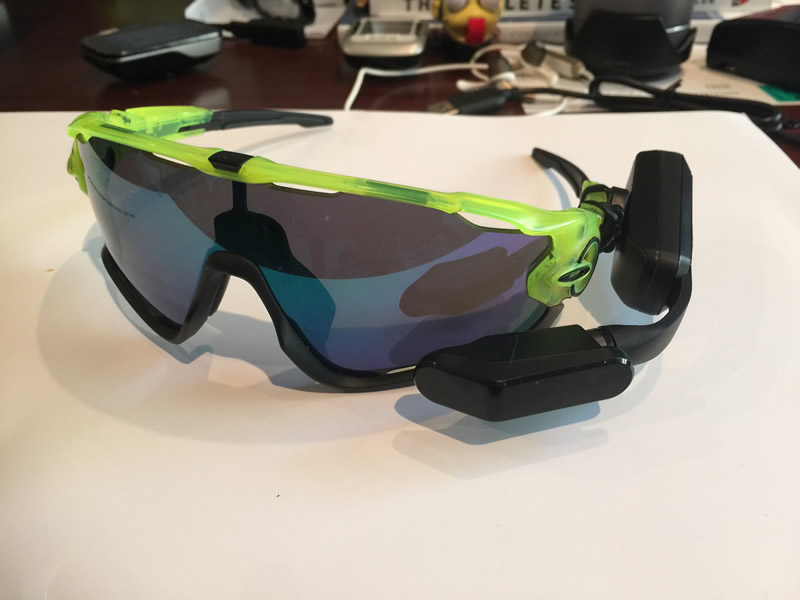
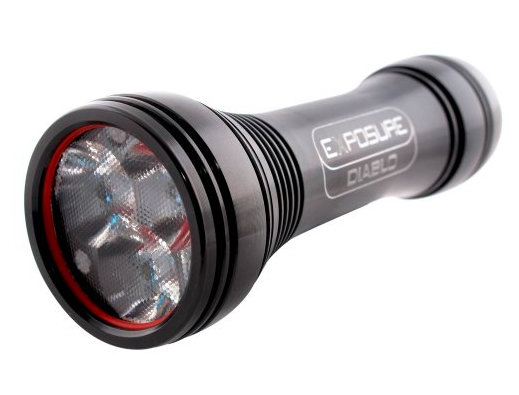
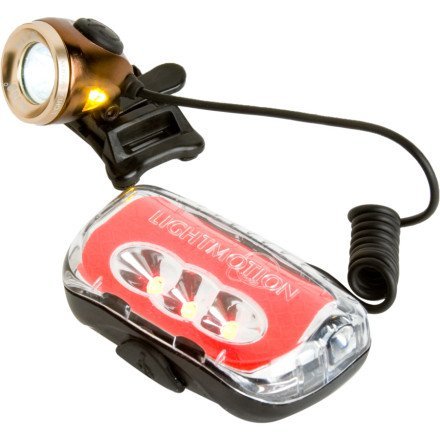
Start the discussion at slowtwitch.northend.network